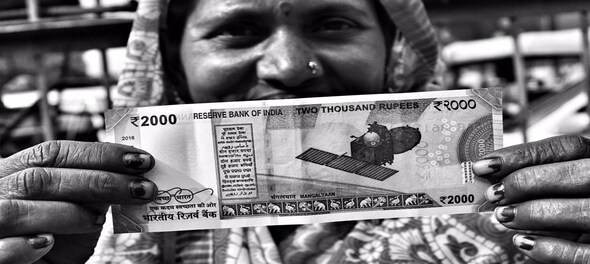
Two years after demonetisation was announced, it should be clear whether it achieved its stated goals. The unorganised component of the economy, which is 45 percent of the output and 93 percent of the employment, has been hurt. This has unfavourable consequences for society as a whole, even if the organised sectors do well.
From day one, this author predicted that demonetization would neither check the process of black income generation nor impact black wealth but would damage the economy if the note shortage continued beyond a month. Not only did the unorganised sector which works in cash largely shut down due to lack of working capital, even the organized sectors faced fall in demand. Institutions like the RBI and Cabinet functioning got damaged.
The Immediate Impact
CMIE data confirms that private investment fell sharply to almost half. Many unorganised sector workers migrated back to their homes in rural areas and sought work there. Demand for work under MGNREGS saw an upsurge as the sharply higher budget allocations suggest. They remain high even two years later, suggesting that workers have not returned since their units have not reopened. Credit offtake fell to a historic low, reflecting a decrease in output and investment.
The decline of the unorganised sectors impacts the demand for its own products. The largest component of this sector (in employment) is agriculture and it has faced a decline in incomes which has meant that the farmers are not able to repay their loans. Consequently, there have been large scale demonstrations by farmers demanding better prices and loan waivers. For months, normal banking work suffered — banks were busy exchanging old notes for new ones. This impacted their profitability. Soon, the adverse economic situation led to an increase in NPAs also, adding to their pre-existing problems.
If the unorganised sector is factored into the calculation of GDP, the current rate of growth of the economy is less than 1 percent and not 7 -8 percent as the official data claims. The quarterly GDP calculations are based on the growth of the corporate sector, which does not fully reflect the organised sector and much less the declining non-agriculture unorganised sectors. International agencies do not collect independent growth data so their endorsement of the government data does not add value.
This low growth rate of the economy underlies the current economic problems – stagnant private investment, fiscal deficit at 95 percent of the annual target in the first five months of the year, tardy exports growth and inadequate employment generation. Of course, other factors (GST, external climate, rise in petroleum prices) are also responsible for these problems but demonetization is a major contributor.
Changing ‘Benefits’
No government admits mistakes. The spin doctors shift the goal posts. So we have heard of cashless to less cash economy and to formalisation of the informal economy. Since all the money had come back into the banks, the line changed to how that would help track the black income generators. Next, data was put out as to how the number of filers of tax returns had increased and that tax collection had risen.
To achieve a less cash economy other means can be used than the hugely damaging demonetisation. A lot of advance preparation is required for its success, namely, financial literary, electricity, internet, regulation and security. Further, little black incomes are generated in the informal sectors so how would their formalisation help? Yes, more tax is collected than earlier but the direct tax to GDP ratio has hardly increased.
The biggest misperception about the black economy is that ‘black means cash’. So, it was thought that if cash is squeezed out of the system, black would go. But cash is also used for circulating the white economy. Further, it does not stop the process of black income generation and can at best impact less than 1 percent of the black wealth held as cash. But since 99.3 percent of the demonetised notes have been returned, it did not even impact this 1 percent of the black wealth.
In brief, the drastic note shortage was short term and it is over but its long-term consequences persist.
Shift again, demonetisation is endorsed by the people — the party in power has won major state elections. This only means that the economic and political perceptions can diverge. The public accepted that `black means cash’ and demonetisation would eliminate the black economy. Two years down the road, the ruling party senses growing disillusionment and is shifting the goal post further to defocus public attention from demonetisation.
Arun Kumar is Malcolm Adisesiah Chair Professor, Institute of Social Sciences. The article is based on the author’s book, `Demonetization and the Black Economy’. 2017. Penguin (India).
First Published: Nov 13, 2018 2:39 PM IST
Check out our in-depth Market Coverage, Business News & get real-time Stock Market Updates on CNBC-TV18. Also, Watch our channels CNBC-TV18, CNBC Awaaz and CNBC Bajar Live on-the-go!


Gulbarga Lok Sabha election: Mallikarjun Kharge's son-in-law Radhakrishna faces sitting BJP MP Umesh Jadhav
May 7, 2024 9:00 AM
Guna Lok Sabha Elections: Can Jyotiraditya Scindia, on BJP ticket, reclaim home turf?
May 7, 2024 8:51 AM

